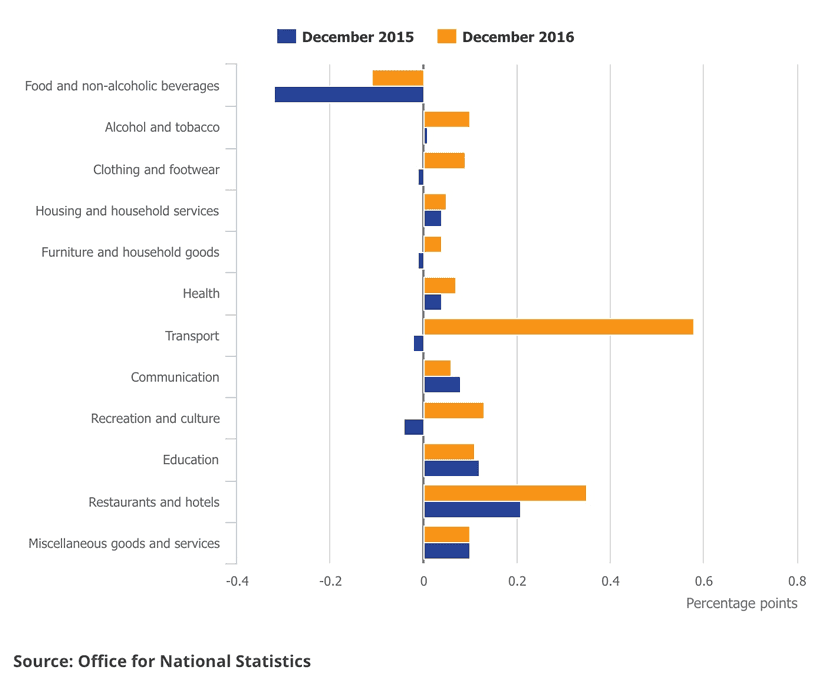Pound Sterling on Front-Foot as UK Inflation Jumps
Inflation jumped to 1.6% on an annualised basis in December 2016 according to latest data from the ONS.
The figures beat expectations for growth of 1.5% and could explain why the British Pound is rising on Tuesday January 17.
The Bank of England is tasked with keeping inflation around 2%, so in some regards the rise in prices is a positive.
"The firmer outturn leaves inflation well ahead of the Bank of England's Inflation Report expectations, where the staff estimate for December envisaged a rate of 1.4% y/y," says a note from analysts at Lloyds Bank Commercial Banking.
There is the real chance that this target will be breached sooner than the Bank would like which would in turn require policy-makers to consider raising interest rates.
If so, then the British Pound could benefit as foreign investors send money to the UK to benefit on higher rates.
Why is UK Inflation Rising Again?
Data shows that the largest contributor to the UK’s jump in inflation is a rise in transport costs.
This is followed by a rise in costs at restaurants and hotels.
Interestingly this could suggest that a rise in global oil prices is the key driver.
So far the discourse has centred around the impact the weaker Pound would have on the cost of imports which naturally become more expensive.
Hence, the Brexit vote has been largely criticised by those on the Remain side of the argument for its negative impact on prices.
However, as can be seen, the cost of food - where the cost of rising imports was expected to be most keenly felt - actually delivered a negative contribution.
However, analyst Scott Bowman, UK Economist at Capital Economics, says the story on fuel could actually have more to do with exchange rates than global oil prices:
“While it will take some time before we see the full effects of sterling’s depreciation on consumer prices, the breakdown showed that components that typically respond more quickly to exchange rate movement were a major upward influence on inflation."
More Inflation in the Pipeline
Expect prices to keep rising in 2017.
Inflationary pressures at the beginning of the supply chain have continued to build.
Input price inflation rose to 15.8% in December and output price inflation picked up from 2.4% in November to 2.7%.
“These pressures should continue to flow through to consumer prices and we think that CPI inflation will breach the 2% target in a few months’ time, peaking at a bit under 3% in early 2018,” says Bowman.
Despite the upside pressures to prices, Bowman believes we are unlikely to see the Bank of England raise interest rates anytime soon.
“With much of the rise this month due to items with high import content and the volatile airfares component, there wasn’t too much to worry the MPC – it said it is willing to look through a temporary exchange-rate driven rise in inflation to support growth,” says Bowman.





